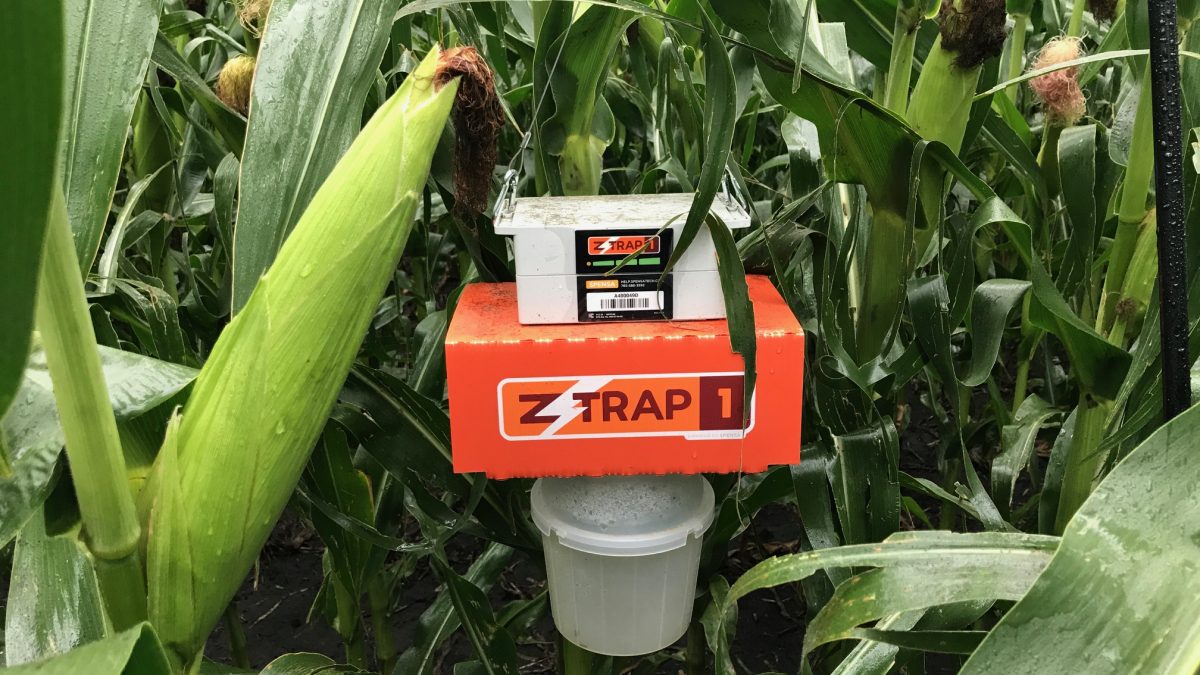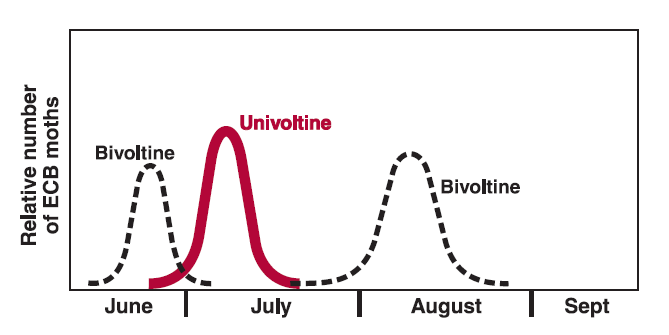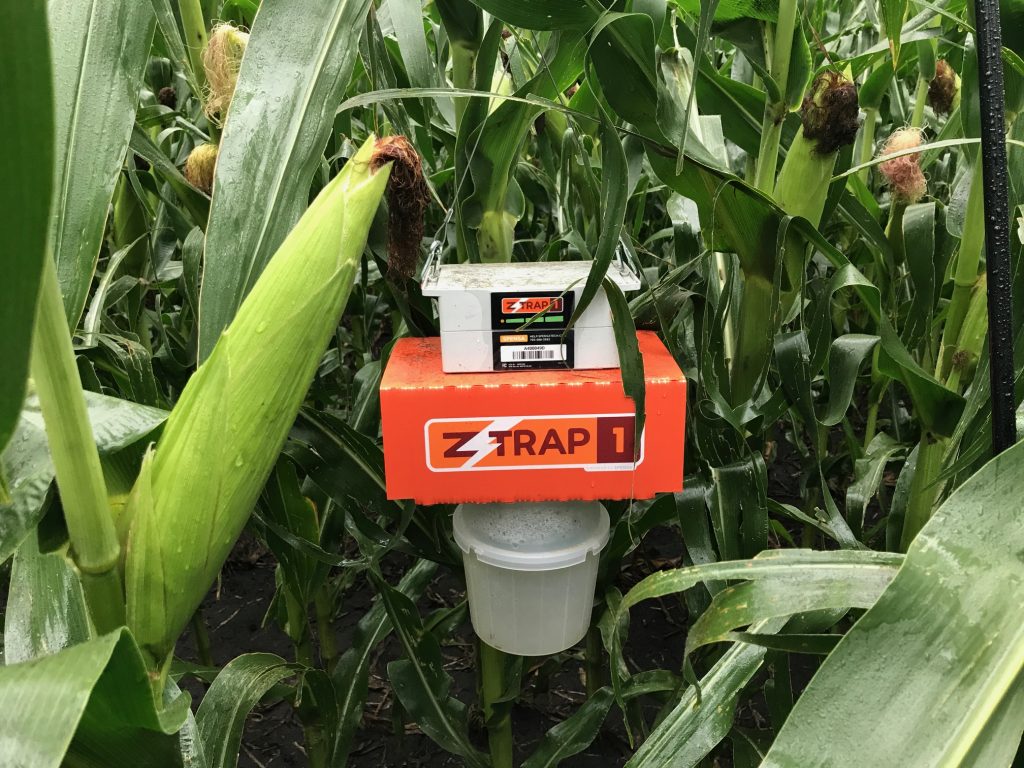European Corn Borer – No News is Good News

In June, I wrote a blog post about the increased use of conventional corn. As you’ll recall, this uptick in conventional corn in our region has increased the need for scouting for European Corn Borer (ECB). Because we have the overlap of two-generations of ECB in our area – the Bivoltine in mid-June and late July along with the Univoltine flight in late June – there is a wide window for an ECB infestation.
As I noted previously, there is some difficulty that comes when scouting for ECB. Hoping to combat that difficulty, I trialed a new tool – electronic monitoring trap called a Z-Trap.
I set the electronic monitoring traps in two different area fields in early June. These traps have a battery life to last the season and a cellular connection to upload insect count to an app. The trap reads the amount of electricity it takes to kill the insect and identifies the insect using that data.
I’m happy to report that the traps in my test fields showed little or no positive readings. The highest daily reading I saw was a ‘2’. The pheromone lures I had in the traps can last up to four weeks, but I swapped them out with a fresh set within the three-week mark to make sure they were never without.
I did identify a few adult European Corn Borer moths in the trap bucket. This could mean that the reading may have had a few false positives but, overall, it was close. I never received a daily reading high enough to worry about the increased pressure of ECB.
In addition to the traps, I looked for eggs and/or shot-holing in the test fields while changing out the pheromone lures and I did not notice any visual evidence of ECB. That said, scouting needs to be done when planting non-Bt corn.European Corn Borer can cause significant yield losses from the tunneling leading to plant stress and later feeding can lead to stalk breakage or corn drop.
As acres increase and we stay busier on the farm, some of these remote electronic monitoring devices will be very necessary. They will help warn us of possible pest issues in our fields while saving our time to devote to other pressing matters on the farm.













